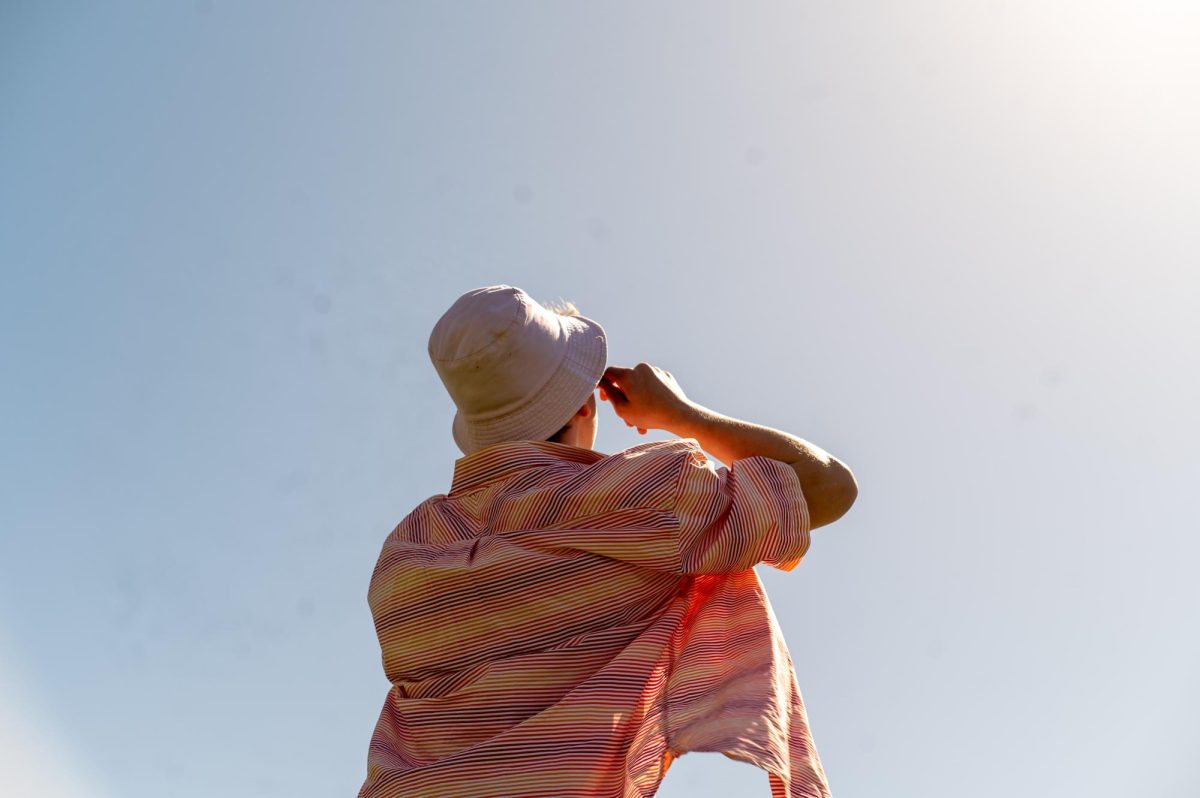Under the clear, sunny sky on April 8, all students and faculty from lower to high school gathered at Jackman Field. This was not a typical assembly — it was a unique event organized to watch the rare total solar eclipse, peaking at 2:07 p.m. Students were excused from class during this time.
This eclipse, known as “The Great North American Eclipse,” was visible within a band extending from Mexico to Canada, passing across a wide swath of the United States, and will not be seen again in the United States until 2045. While some students traveled out of state to see the complete eclipse, the rest viewed it with 94% coverage at school.
The Adler Planetarium provided 2,700 viewing glasses and filters to prevent severe eye injuries. After, students were offered eclipse-themed snacks: Sun Chips, CapriSuns, and Orbit gum.
Students and faculty had mixed opinions about the eclipse celebration. Some found the phenomenon to be amazing, some enjoyed the social aspect more, some were underwhelmed and some were afraid.
“It’s beautiful. Nature is so magnificent. It’s really like nothing else,” junior Lee Rupple said.
Students who traveled to view the complete eclipse also enjoyed it, like junior Andrew Poston who drove to Indianapolis.
“I was surprised more people didn’t go,” Andrew said. “It was such an other-worldly experience.”
While those like Lee and Andrew were in awe of the eclipse, others were less enthused.
“I understand what it might have meant in history, witchcraft, religious things — people thinking it was the end of the world,” physics teacher Francisco Saez said. “At that time, it might have been really amazing, but now it’s OK. We know everything about it. We know what is going to happen, for how long. It’s just too predictable. It’s not as fun anymore.”
Like Mr. Saez, ninth grader Iris Strahilevitz did not feel too excited, but she greatly enjoyed the social aspect.
“I loved hanging out on Jackman with friends but thought the eclipse was a little underwhelming,” Iris said.
Students were relaxing on the turf, holding glasses up to their eyes to view the eclipse. They were standing up, placing the glasses on their phone cameras to capture the perfect picture. They were socializing with friends and faculty, the fading sunlight shining down on them.
“It was amazing to see the whole Lab community together,” junior Alexander Saratovsky said. “It was definitely more fun to see and hang out with friends and classmates for a bit than to see the actual event.”
Few school events involve the entire Lab community, and students like seventh grader Hazel Hotz appreciated the scale of this event.
“I think that it is really really cool that everyone is coming together,” Hazel said, “because everyone gets to bond and see people they don’t normally see — to see something that happens once in 20 years.”
As the moon slowly began to cover more of the sun, the sunlight dimmed, casting a filter-like effect on the whole field. Heads pointed to the sky, eyes protected by viewing glasses, yet some looked away.
“I’m so scared of the solar eclipse,” sophomore Cecilia Siegel said. “I’m so scared I’m gonna go blind. I love my vision. I’m terrified. This is the scariest thing I’ve ever had to do in my life.”
Middle school librarian Amy Atkinson shared some of this fear.
“It’s nice to see everyone gathered together outside with their friends,” Ms. Atkinson said, “but I’m also a bit nervous that people will look directly at the sun.”
Whether excited or afraid, the event was certainly memorable.
“It’s really cool how it’s so close to us this year,” senior Maria Razborova said. “I don’t think we’ll ever get to see it this close again.”
— Additional reporting contributed by Taariq Ahmed, Lila Coyne, Lucia Dumitrescu, David Li and Olivia Quiles
This story was originally published on U-High Midway on April 10, 2024.




































